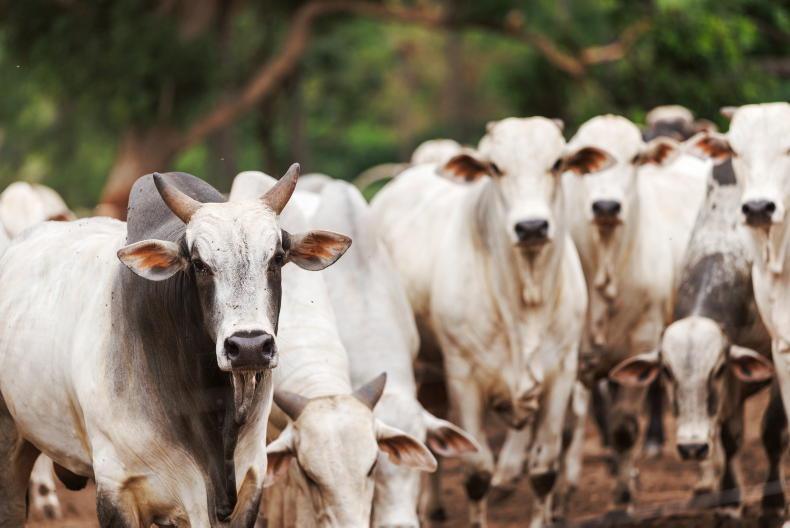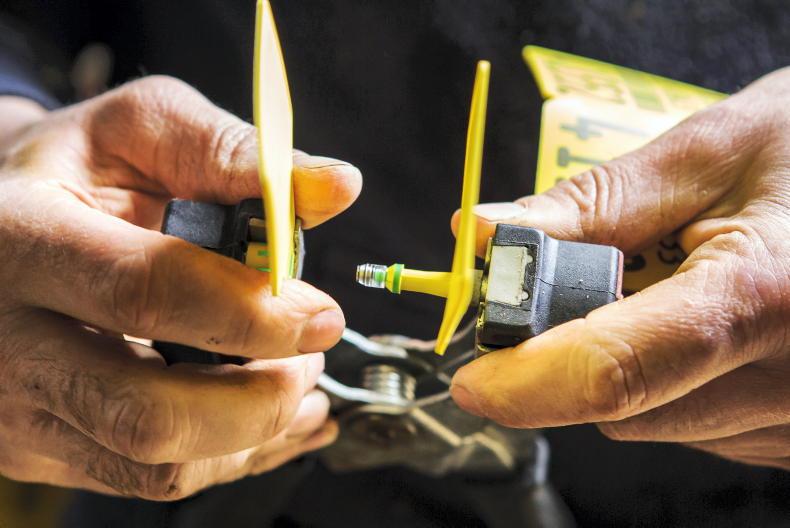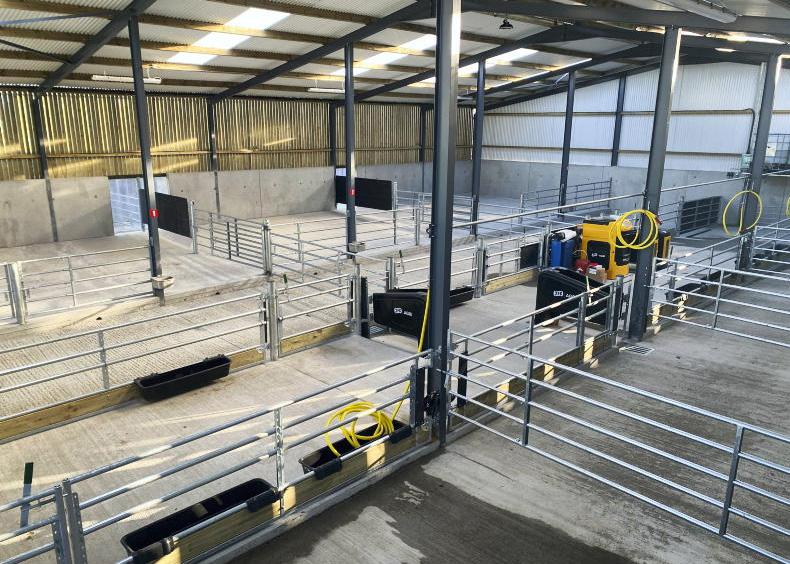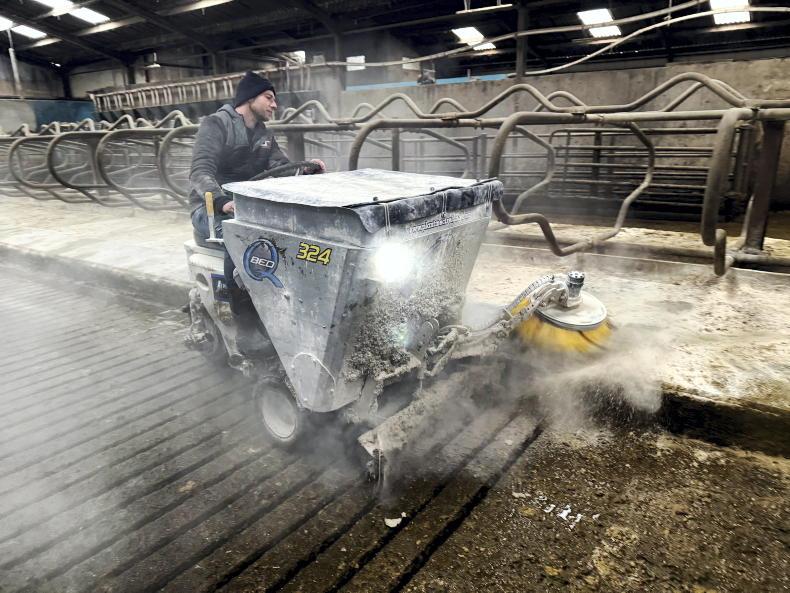The cold winter nights are often a time for the fireside and family. It is also a time to reflect on what went well on farm and what we can do better. Farming systems are cyclical – some parts we can control and others we can’t. The weather and markets are beyond our control. Time spent worrying about both is often time wasted. We can only control what is inside the farm gate. Animal health is one area we can look at, and definitely do something about. Here are eight things we can plan ahead for this winter.
For most farms this winter, the main diet is grass silage. Most farms will chose to supplement with meal and minerals depending on production needs. Silage analysis allows us make more scientific supplementation choices.
Energy and protein are key requirements for cows and ewes while pregnant. Knowing what is in your feed is so important.
Silage quality can also influence colostrum quality in sheep and cattle
This allows you make decisions about the amount of feed to meet animals’ metabolic needs.
Silage quality can also influence colostrum quality in sheep and cattle, and determine our need to supplement.
Silage mineral analysis (€75.00) can also allow us supplement with more accuracy. I always suggest sampling the silage being fed coming up to and around calving and lambing.
2 Reducing the worm burden
Housing is a great time to look at parasite control both short and long term. Initially we want to treat any worm and fluke burdens, which can greatly affect performance and animal health.
Cattle farmers should review any factory reports on livers to check for fluke damage.
Different products will kill different stages of fluke
It is definitely worth considering faecal egg counts for younger groups to check for parasites.
Different products will kill different stages of fluke and it is always worth making sure that we don’t carry parasites through the winter and back out on to pasture in spring.
3 Hygiene for lambing and
calving
There is no better time spent now (or before this) than cleaning lambing and calving facilities for the spring of 2020. Some bugs, such as cryptosporidium and coccidia, can survive in sheds year to year. A deep clean can make a difference to start the spring with a clean sheet so to speak.
Lambing or calving facilities should also have a sink with hot water
A good routine is to power-hose all sheds and equipment on day one. Then follow with a thorough steam clean using an industrial steam cleaner on day two. Then on day three using a power hose again or knapsnack sprayer thoroughly soak the sheds with disinfectant. Then allow them some time to dry before stock are introduced.
Lambing or calving facilities should also have a sink with hot water. This is something that can really help with equipment cleaning and making up powders.
Also, winter is a good time to draw up standard hygiene procedures around milking or for routines around calf-rearing systems
Anyone who had lame cows over the last six months should reflect on any ways that this can be improved, particularly if you have seen more white line disease, sole ulcers or drops. Roadway surfaces can play a big role. Walk your roadways and at a minimum they should be resurfaced where they are bad. Consider a hoof-trimming training course to ensure cows that are lame get quick on-farm attention.
Any dairy farmers who have had lameness issues during the winter should look at making sure every cow has a bed or cubicle
Long-term in grass-based systems, roadways are one of the best infrastructural investments on your farm.
Any dairy farmers who have had lameness issues during the winter should look at making sure every cow has a bed or cubicle and run scrapers more to increase hygiene.
It’s a great time to draw up a list of equipment needed for animal health in the spring. Every milking machine should be serviced and check when the liners were last changed. Any automatic calf feeders should be dusted down and checked. Wash any lines that don’t rinse automatically.
A new stomach tube is always a good investment; certainly check the old one, particularly the tip, for any damage. Check any single-unit milking machines and give them a thorough wash and clean.
Calves and lambs are very susceptible to the cold. Planning ahead to have plenty straw bedding and blocking up low-lying draughts is really important. Calf jackets for dairy farms are a good investment even just for weak or sickly calves. Some farms will have more open calf sheds, which work well where jackets are used.
With lambs, a warming box is a really good investment
Any suckler farmer should have one calf jacket (at least) for that weak, small or sick calf. Remember though to wash these jackets between calves.
With lambs, a warming box is a really good investment. There are some simple ones available or they can be made with some ingenuity.
Very few things will have a more positive impact on the health of animals indoors than getting ventilation right. Fresh air is a natural disinfectant and should be in abundance around animals. The challenge is to not have draughts at animal level. When stock are in sheds, use your senses.
We can use smoke bombs to track air flow. We want smoke to be cleared in 10-15 seconds
An ammonia-type smell is not good, for example, and suggests poor air flow.
We can use smoke bombs to track air flow. We want smoke to be cleared in 10-15 seconds. It should not linger.
Small alterations to inlets and outlets can make a difference. Some sheds can benefit from positive pressure ventilation or pipes which blow cold fresh air in.
The biggest impact on good animal health will always be people. So this winter if you get a chance take a break. Don’t underestimate the impact of not giving yourself a break. There is massive value in stepping out of your business and looking in.
A blank page and a pen is a good starting point for planning.
Don’t start doing everything and finish nothing
Then bring other people around your business in to help you build a strategy and set some goals.
Focus on one task at a time. Don’t start doing everything and finish nothing.
Having an animal health plan means you can set some goals to follow. Then review them over time.
Start where your animal health issues are, then work on one task at a time. Giving yourself and your farm plans some time can deliver the best return on investment.
The cold winter nights are often a time for the fireside and family. It is also a time to reflect on what went well on farm and what we can do better. Farming systems are cyclical – some parts we can control and others we can’t. The weather and markets are beyond our control. Time spent worrying about both is often time wasted. We can only control what is inside the farm gate. Animal health is one area we can look at, and definitely do something about. Here are eight things we can plan ahead for this winter.
For most farms this winter, the main diet is grass silage. Most farms will chose to supplement with meal and minerals depending on production needs. Silage analysis allows us make more scientific supplementation choices.
Energy and protein are key requirements for cows and ewes while pregnant. Knowing what is in your feed is so important.
Silage quality can also influence colostrum quality in sheep and cattle
This allows you make decisions about the amount of feed to meet animals’ metabolic needs.
Silage quality can also influence colostrum quality in sheep and cattle, and determine our need to supplement.
Silage mineral analysis (€75.00) can also allow us supplement with more accuracy. I always suggest sampling the silage being fed coming up to and around calving and lambing.
2 Reducing the worm burden
Housing is a great time to look at parasite control both short and long term. Initially we want to treat any worm and fluke burdens, which can greatly affect performance and animal health.
Cattle farmers should review any factory reports on livers to check for fluke damage.
Different products will kill different stages of fluke
It is definitely worth considering faecal egg counts for younger groups to check for parasites.
Different products will kill different stages of fluke and it is always worth making sure that we don’t carry parasites through the winter and back out on to pasture in spring.
3 Hygiene for lambing and
calving
There is no better time spent now (or before this) than cleaning lambing and calving facilities for the spring of 2020. Some bugs, such as cryptosporidium and coccidia, can survive in sheds year to year. A deep clean can make a difference to start the spring with a clean sheet so to speak.
Lambing or calving facilities should also have a sink with hot water
A good routine is to power-hose all sheds and equipment on day one. Then follow with a thorough steam clean using an industrial steam cleaner on day two. Then on day three using a power hose again or knapsnack sprayer thoroughly soak the sheds with disinfectant. Then allow them some time to dry before stock are introduced.
Lambing or calving facilities should also have a sink with hot water. This is something that can really help with equipment cleaning and making up powders.
Also, winter is a good time to draw up standard hygiene procedures around milking or for routines around calf-rearing systems
Anyone who had lame cows over the last six months should reflect on any ways that this can be improved, particularly if you have seen more white line disease, sole ulcers or drops. Roadway surfaces can play a big role. Walk your roadways and at a minimum they should be resurfaced where they are bad. Consider a hoof-trimming training course to ensure cows that are lame get quick on-farm attention.
Any dairy farmers who have had lameness issues during the winter should look at making sure every cow has a bed or cubicle
Long-term in grass-based systems, roadways are one of the best infrastructural investments on your farm.
Any dairy farmers who have had lameness issues during the winter should look at making sure every cow has a bed or cubicle and run scrapers more to increase hygiene.
It’s a great time to draw up a list of equipment needed for animal health in the spring. Every milking machine should be serviced and check when the liners were last changed. Any automatic calf feeders should be dusted down and checked. Wash any lines that don’t rinse automatically.
A new stomach tube is always a good investment; certainly check the old one, particularly the tip, for any damage. Check any single-unit milking machines and give them a thorough wash and clean.
Calves and lambs are very susceptible to the cold. Planning ahead to have plenty straw bedding and blocking up low-lying draughts is really important. Calf jackets for dairy farms are a good investment even just for weak or sickly calves. Some farms will have more open calf sheds, which work well where jackets are used.
With lambs, a warming box is a really good investment
Any suckler farmer should have one calf jacket (at least) for that weak, small or sick calf. Remember though to wash these jackets between calves.
With lambs, a warming box is a really good investment. There are some simple ones available or they can be made with some ingenuity.
Very few things will have a more positive impact on the health of animals indoors than getting ventilation right. Fresh air is a natural disinfectant and should be in abundance around animals. The challenge is to not have draughts at animal level. When stock are in sheds, use your senses.
We can use smoke bombs to track air flow. We want smoke to be cleared in 10-15 seconds
An ammonia-type smell is not good, for example, and suggests poor air flow.
We can use smoke bombs to track air flow. We want smoke to be cleared in 10-15 seconds. It should not linger.
Small alterations to inlets and outlets can make a difference. Some sheds can benefit from positive pressure ventilation or pipes which blow cold fresh air in.
The biggest impact on good animal health will always be people. So this winter if you get a chance take a break. Don’t underestimate the impact of not giving yourself a break. There is massive value in stepping out of your business and looking in.
A blank page and a pen is a good starting point for planning.
Don’t start doing everything and finish nothing
Then bring other people around your business in to help you build a strategy and set some goals.
Focus on one task at a time. Don’t start doing everything and finish nothing.
Having an animal health plan means you can set some goals to follow. Then review them over time.
Start where your animal health issues are, then work on one task at a time. Giving yourself and your farm plans some time can deliver the best return on investment.










SHARING OPTIONS